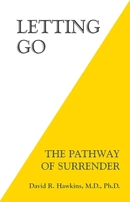Using prosthetic bras can boost survivor confidence


More than 80 percent of women seeking treatment for breast cancer in Uganda are diagnosed at a late stage of the disease. According to Global Cancer Statistics 2022, breast cancer accounts for about 23.3 percent of all cancers in women, making it the second most common cancer among women in the country. Annually, there are 2,999 new cases of breast cancer, and approximately 10 percent of all breast cancer patients are men. Breast cancer is responsible for around 12.6 percent of all cancer-related deaths in Uganda.
Many women are diagnosed with advanced stages of the disease, which significantly impacts treatment outcomes. Surgical interventions, including mastectomy, are common for women with breast cancer. The percentage of patients undergoing mastectomies varies but is often significant, primarily due to the need to remove large tumours or as a result of late-stage diagnosis.
Body shape challenges
The physical changes that come with breast cancer treatment, such as mastectomy, weight gain or loss, and changes in skin texture, can profoundly impact a woman's self-esteem. Many struggle with feelings of loss and a diminished sense of femininity.
"The fear of losing a breast can lead some women to delay or refuse necessary surgeries. This reluctance often stems from societal pressures regarding beauty and femininity, making it a significant barrier to seeking timely treatment," Nakigudde says.
The need for specialised clothing or prosthetics can be both a financial burden and an emotional hurdle. Women may feel they no longer have options that align with their style, leading to further frustration and sadness.
Cultural beliefs can exacerbate body image issues. In many Ugandan communities, breasts are closely associated with femininity and motherhood. The removal of one or both breasts can be perceived as a loss of womanhood, leading to societal judgment and exclusion.
"The intersection of cancer and body image issues often results in heightened anxiety and depression. Many women report feelings of being trapped in a body that no longer feels like their own, which can hinder their recovery and overall quality of life," she says.
Surgery is the hardest part of cancer treatment for many women and many refuse this part of treatment because they fear losing their identity as women. Emotional support and counselling can also play a crucial role in helping women cope with the psychological effects of mastectomy and exploring their options.
Denise Atwine, a cancer survivor, says, "I felt different after my breast was removed. I became depressed. My body had changed, and I tried to create balance by layering clothes, but they never stayed in place and kept falling out."
As an organisation supporting women with cancer, Uganda Women’s Cancer Support Organisation (UWOCASO) has on several occasions tried to look out and find prosthetic bras for women who have undergone mastectomy, but they are only able to rely on donations from Australia.
"We try to find donations for the silicone breasts, but it is not sustainable. The prosthesis cost between $100 (about Shs367,000) and $300 (about Shs1.1m). Here, we charge Shs100,000 as a fee for the shipment of these artificial breasts," Nakigudde says.
Other options
Women who have undergone a mastectomy have several options for breast reconstruction and correction, each with its benefits and considerations. Each option has its advantages and drawbacks, and the choice depends on individual preferences, cost, health considerations, and lifestyle.
Silicone breast forms are external prostheses that can be worn inside a bra. They are adjustable and can provide a natural appearance. Prostheses come in a wide variety of shapes, sizes, and skin tones. Most are made from materials designed to move, feel, and weigh as similar to a natural breast as possible. The prosthesis must suit your lifestyle as much as possible.
“When a woman has a silicon prosthesis, she needs a bra with a pocket where she can place the prosthesis. This ensures that it does not fall out and that the woman is confident when she dresses up,” says Hilda Mwesigwa, a cancer survivor.
At UWOCASO, women are taught how to make crochet prosthetics, which are said to be a cheaper option. However, Mwesigwa says, “The knitted ones are not shaped like breasts, so they appear funny when one is wearing them. They are also very light compared to the other breast. The silicone ones become heavy over time because we wear them beyond their expiry. This is because we rely on donations.”
Implants
Other options can be breast reconstruction surgery involving placing silicone or saline implants under the skin or chest muscle. This can be done immediately after mastectomy or at a later date.
Fat grafting, on the other hand, involves harvesting fat from other areas of the body (such as the abdomen or thighs) and injecting it into the breast area. This can help improve contour and symmetry after a mastectomy. However, Nakigudde remarks that this is an expensive process since hospitals treat it as cosmetic surgery and may not charge below Shs5m for a single breast.
Some companies offer custom prosthetics designed to match the individual's body shape, size, and skin tone, providing a personalised approach to post-mastectomy care.
Consulting with a healthcare provider, including a plastic surgeon, can help women make informed decisions that align with their needs and desires.
The role of counselling
Counselling before undergoing a mastectomy is crucial for several reasons, as it helps women navigate the emotional, psychological, and practical aspects of their diagnosis and treatment.
A mastectomy can evoke a range of emotions, including fear, anxiety, and sadness. Atwine notes that counselling provides a safe space to express these feelings and begin processing them, especially if it is conducted by someone who has gone through the same situation.
“I did not want people to see or talk to me, but when a woman who had gone through my situation spoke to me, I was relieved knowing that she understood me. I then opened up to her and went back to the Uganda Cancer Institute to complete my treatment, which I had rejected earlier,” she recalls.
Navigating life after surgery may be challenging for women, but they need the support of a spouse or family to adjust to life after a mastectomy, addressing potential changes in lifestyle, intimacy, and relationships.
“During the treatment process, it is important to involve family members, friends, and support groups in counselling sessions to improve understanding and communication, and provide a more supportive home environment,” Mwesigwa says.
A mastectomy significantly alters body image. Counselling can help women discuss these changes and explore their feelings about their bodies post-surgery.
During the sessions, women can voice concerns about the surgery, potential outcomes, and the impact on their body image and self-esteem. Addressing these concerns can reduce uncertainty and fear.
Counselling can aid in fostering a positive self-image and resilience, empowering women to embrace their new reality after surgery.








0 Comments